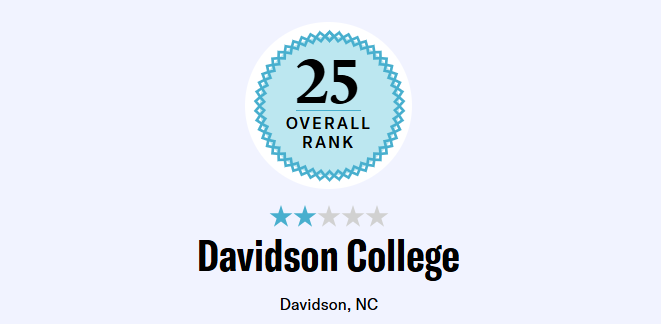The Case for Retracting Matthew Desmond’s 1619 Project Essay

By Phillip W. Magness
American Institute for Economic Research
February 11, 2020
Since the outset of the 1619 Project controversy, I have consistently argued that the overwhelming majority of the project’s problems derive from a single featured essay: Matthew Desmond’s piece on capitalism and slavery.
This essay advances an explicit anti-capitalist political message that’s rooted in a fundamental misreading of economic history. Although he repurposes the concept with an antislavery message, Desmond essentially attempts to rehabilitate King Cotton ideology, a long-discredited piece of proslavery propaganda from the Confederate era. He also ignores the intellectual history of capitalism, including the strong historical association between laissez-faire theorists and abolitionism.
Today I’d like to take a look at another dimension of the problems in Desmond’s essay: its errors of historical fact and its misuse of historical sources.
In doing so, it is important to recognize that there are still other faults with other contributions to the 1619 Project. Its lead essay still exaggerates British antislavery elements during the American Revolution, repurposing independence as a proslavery movement. But these faults are not irremediable. They could be addressed by relaxing the claim or injecting greater nuance into the discussion, should the Times exhibit an inclination to place historical accuracy above politics.
Desmond’s argument, however, is riddled with factual error and dubious scholarly interpretations that warrant severely discounting the piece as a whole.
Let’s consider those problems.
A Faulty Genealogy
Desmond begins his argument by asserting a direct lineal descent from the violent and coercive operations of the plantation system to the business practices of the modern economy. As he contends, “Recently, historians have pointed persuasively to the gnatty fields of Georgia and Alabama, to the cotton houses and slave auction blocks, as the birthplace of America’s low-road approach to capitalism.” The historians he refers to here are almost exclusively drawn from the highly contested “New History of Capitalism” (NHC) school, and many of its leading contributors are featured in his essay.
Desmond’s reliance on such a narrow historiographical echo chamber is itself problematic, given how many scholars outside of the NHC reject its claims and given the documentation of errors affecting its core claims. We may nonetheless follow his claimed genealogical progression from the plantation to the modern economy. The effect of this alleged infusion, Desmond therefore contends, is to instill modern capitalism with a foundational “brutality” that can only be rectified by adopting a litany of economic policy interventions that bear striking resemblance to the progressive wing of the Democratic Party today.
The stated genealogy is presented as a matter of fact. Desmond invokes the imagery of a modern corporation where “everything is tracked, recorded and analyzed, via vertical reporting systems, double-entry record-keeping and precise quantification,” then asserts that “many of these techniques that we now take for granted were developed by and for large plantations.”
“When an accountant depreciates an asset to save on taxes or when a midlevel manager spends an afternoon filling in rows and columns on an Excel spreadsheet,” he continues, “they are repeating business procedures whose roots twist back to slave-labor camps.” By direct implication, modern capitalism carries that same moral stain with it.
There are immediate problems with Desmond’s historical narrative. The history of double-entry bookkeeping and business measurement predates plantation slavery by several centuries, with origins that are directly traceable to the banking families of late medieval Italy. Desmond seems not to understand the accounting function of depreciation, which arose mainly in the railroad industry as a mechanism for distributing the distortive effects of large replacement purchases on machinery that underwent constant wear and tear.
Nor are the tools of measurement and finance distinctly capitalistic, as their attempted adaptation to the centralized planning of the Soviet Union and other 20th-century communist states attests. Most attempts to operationalize socialist economic planning depend by necessity on the complex quantification of resource allocation, or attempts at input-output modeling of inter-industry relationships, usually adopted as an alternative to the obviated role of the price mechanism in decentralized allocation.
But even more problematically, Desmond’s claim does not match his own stated source, Caitlin Rosenthal’s 2018 book Accounting for Slavery. While Rosenthal does investigate the historical use of accounting practices on the plantation with informative insights into how slave owners made their institution profitable, she attaches a substantial caveat at the outset of her book:
This is not an origins story. I did not find a simple path where slaveholders’ paper spreadsheets evolved into Microsoft Excel. (p. xii)
The plain language of this caveat expressly disavows the genealogical interpretation that Desmond assigns to her work, even using the very same example of Microsoft Excel to convey her rejection. In short, the 1619 Project inverts its source’s claimed purpose.
When I recently pointed this contradiction out to the Times, the newspaper’s editors indicated that they were standing by Desmond’s claim nonetheless and suggested that doing so now meets with Rosenthal’s own post hoc concurrence. Given that her publisher is also now touting Desmond’s passage as an endorsement of this book, one is left to wonder why this caveat was included if it is going to be abandoned with such nonchalance.
The alteration carries substantial implications for Rosenthal’s thesis. As presented in its original form, Accounting for Slavery documents the unsurprising but historically interesting fact that slave owners managed their plantations by adapting then-modern accounting and financial practices found elsewhere in the business community to their own horrid institution.
When repurposed as a genealogy, however, this thesis falls apart for want of evidence. Rosenthal’s work does not show that the specific accounting practices of the plantations were transmitted to modern Wall Street, or that later businessmen learned their trades specifically from slavery’s financial innovations, as opposed to common financial and accounting practices that long predate the American plantation system. If accepted, Desmond’s rendering of Accounting for Slavery would damage its own scholarly contribution as a work of history by stretching its evidence far beyond what the book’s contents and documentation either claim or support. Yet that’s the reading the Times appears to be sticking with.
Even in this simple presentation, Desmond’s spin on Rosenthal’s work exhibits the telltale characteristics of the genetic fallacy, wherein an unsavory origin is said to be a discrediting of a position in the present. But Desmond’s origin story is also wrong.
Illustrative of this fallacy, he quotes NHC historians Sven Beckert and Seth Rockman to assert that “American slavery is necessarily imprinted on the DNA of American capitalism.” Beckert and Rockman’s genetic claim would have come as a great surprise, if not a source of outrage, to the slaveholders of the late antebellum period. Leading proslavery theorist George Fitzhugh wrote in 1854 that the tenets of free market capitalism were “at war with all kinds of slavery, for they in fact assert that individuals and peoples prosper most when governed least.” The depiction of slavery as capitalistic also chafes with the most developed ideological justifications that Southern radicals made for their economic system — a system built upon a coerced hierarchy of laborers forced to do menial tasks under the paternalistic direction of quasi-feudal plantation owners.
This leaves his historical account fraught through with factual and interpretive errors. Desmond’s attempt to tie slavery to modern accounting misses the latter’s known and separate origins, misrepresents accounting and measurement as uniquely capitalistic, and directly inverts the disavowal of an origin story in its own cited source. It’s safe to say that his thesis is off to a poor start.
A Misrepresented Statistical Claim
Taking his own false genealogy of modern accounting as a given, Desmond next turns to its claimed economic implications for the plantation system. To illustrate the effect, he points to a stunning statistic:
During the 60 years leading up to the Civil War, the daily amount of cotton picked per enslaved worker increased 2.3 percent a year. That means that in 1862, the average enslaved fieldworker picked not 25 percent or 50 percent as much but 400 percent as much cotton than his or her counterpart did in 1801.
The implication is clear. Desmond seeks to convey that “capitalist” business practices allowed plantation masters to forcibly extract the maximum amount of productivity from their enslaved workforce to such a degree that it causally drove the rapid expansion of the American cotton industry in the early 19th century. Cotton output, he contends, arose directly from a symbiotic convergence of capitalism and the whip.
The underlying statistic is nominally accurate insofar as American cotton production grew almost fourfold between 1800 and the Civil War. But Desmond has also repeated a severe misrepresentation of this statistic’s source.
The 400 percent increase estimate comes from a 2008 article by economists Alan Olmstead and Paul Rhode, and reflects their calculation of yearly cotton picking rates from almost 150 sets of plantation records. Yet Olmstead and Rhode do not attribute this production increase to a devil’s bargain between double-entry bookkeeping and systematized beatings of the slaves. Instead, they present clear evidence of a very different explanation. American planters improved their crop through biological innovation, such as creating hybrid seed strains that yielded more cotton, were easier to pick, and were more resistant to disease. As Olmstead and Rhode conclude:
Technological changes revolutionized southern cotton production in the 60 years preceding the Civil War. The amount of cotton a typical slave picked per day increased about 2.3 percent per year due, primarily, to the introduction and perfection of superior cotton varieties.
Although the two economists support this technological explanation with extensive statistical evidence, Desmond and the NHC scholars he relies on ignore it and append their own alternative spin to Olmstead and Rhode’s data. Instead of seed improvements, they contend that the 400 percent increase arose from a systematized and quantified process of whipping meant to extract greater labor from the slaves.
Desmond gets this alternative interpretation directly from NHC historian Ed Baptist. According to Baptist, the Olmstead and Rhode statistics attest to “an economy whose bottom gear was torture.” By tracking individual slave production, he contends, slave drivers were essentially able to calibrate their torture to maximize and increase cotton picking rates over time. As Desmond describes it, “The violence [of slavery] was neither arbitrary nor gratuitous. It was rational, capitalistic, all part of the plantation’s design.”
The “calibrated torture” thesis is a central claim of Baptist’s 2015 book The Half Has Never Been Told, itself one of the foundational texts of the NHC genre. Turning to Baptist’s book, we find clearly that he too enlisted Olmstead and Rhode’s 2008 paper for his evidence of the fourfold increase in cotton output before the Civil War, even reprinting one of their main graphs on page 127 of his book and another of their tables on page 129.
Baptist’s book is an unscholarly mess of misinterpreted data, misrepresented sources, and empirical incompetence. In proclaiming the novelty of its own “never told” story, he also constructs a bizarre strawman of the scholarly literature on the economics of slavery before his own work. As Baptist writes on page 129 of his book, the claim that slavery was less efficient than free labor is “a point of dogma that most historians and economists have accepted.”
In reality, most economic historians have associated economic efficiency as well as profitability with slavery since a landmark article by Alfred Conrad and John R. Meyer argued this position in 1958. The relationship between slavery, efficiency, and profitability is the subject of a vast subsequent literature that Baptist almost entirely ignores. As we can already see, his book is essentially arguing against a phantasm of his own imagination.
The problems similarly extend to Baptist’s treatment of the Olmstead and Rhode data. Although Baptist uses the economists’ statistics, he conveniently omits their evidence that cotton production growth arose from biological innovation in seed strains. Instead he supplants it with his own explanation, the “calibrated torture” thesis that Desmond then repeats. In the NHC telling, the 400 percent growth in cotton output arose from “ratcheting” production rates upward through tracked and mathematized beatings of the slaves who picked the crop.
Baptist’s sleight of hand was not lost upon the economists. In 2018 Olmstead and Rhode published a withering rebuttal of Baptist’s book, using additional records from plantations to empirically debunk his “calibrated torture” argument. Rather than corresponding to mathematized whipping — a claim that Baptist also makes by altering and distorting the text of historical slave narratives to make them fit his thesis — actual cotton picking rates from the Olmstead and Rhode data clearly follow a seasonal pattern corresponding to the annual crop cycle. As the economists write:
Recall that Baptist has embraced our data showing a roughly four fold increase in average cotton picking rates over the antebellum years. These data only reported plantation yearly averages. If we turn up the power of our microscope and look at the daily data for individual slaves that we used to construct the plantation averages, a whole new world appears that allows us to investigate empirically the effect of current picking on future picking. There is no evidence of ratcheting. Over the course of a year picking rates formed an inverted “U” going up to a peak period and then falling significantly.
In short, Baptist’s thesis not only misrepresents the evidence from Olmstead and Rhode, his own cited data source — it also misunderstands the numbers behind that source.
Baptist, much to the discredit of his professionalism, has subsequently adopted a strategy of refusing to engage with Olmstead and Rhode’s rebuttal. Instead he brushes it aside and persists as if his own thesis is uninterrupted and unaltered in the face of clear contradictory evidence.
Although the 1619 Project’s editors have been circumspect about revealing the scholars they consulted on the project, it is becoming increasingly clear that Baptist heavily influenced and likely advised Desmond’s essay. Desmond essentially adopts The Half Has Never Been Told as the basis of his economic interpretation, and of the aforementioned statistic. It therefore casually repeats Baptist’s errors and misrepresentations of Olmstead and Rhode’s work.
Olmstead and Rhode’s critique of Baptist falls squarely among the highest-profile academic debates of the last decade. In 2016 it broke away from the confines of academic journals and into mainstream journalism, with even the Washington Post running an essay on the dispute.
Curiously, the 1619 Project’s editors appear to have completely missed this dispute. When I asked her about Desmond’s overreliance on Ed Baptist’s debunked claims, project editor Nikole Hannah-Jones responded, “Economists dispute a few of Baptist’s calculations but not the book itself nor its thesis.”
Olmstead offers a very different assessment: “Edward Baptist’s study of capitalism and slavery is flawed beyond repair.” And as we’ve now seen, Desmond’s 1619 Project essay lifted its main empirical argument from Baptist and grafted it onto a false genealogy that purports to derive modern accounting practices from lineal “roots” in the plantation system.
It would seem, too, that Desmond’s essay is flawed beyond repair.
As the New York Times often presents itself as a stickler for corrections in the name of ensuring factual and interpretive accuracy, substantial portions of Desmond’s essay warrant retraction — including its main thesis linking modern capitalism to slavery.
Phillip W. Magness
Phillip W. Magness is Senior Research Faculty and F.A. Hayek Chair in Economics and Economic History at the American Institute for Economic Research. He is also a Research Fellow at the Independent Institute. He holds a PhD and MPP from George Mason University’s School of Public Policy, and a BA from the University of St. Thomas (Houston). Prior to joining AIER, Dr. Magness spent over a decade teaching public policy, economics, and international trade at institutions including American University, George Mason University, and Berry College. Magness’s work encompasses the economic history of the United States and Atlantic world, with specializations in the economic dimensions of slavery and racial discrimination, the history of taxation, and measurements of economic inequality over time. He also maintains an active research interest in higher education policy and the history of economic thought. His work has appeared in scholarly outlets including the Journal of Political Economy, the Economic Journal, Economic Inquiry, and the Journal of Business Ethics. In addition to his scholarship, Magness’s popular writings have appeared in numerous venues including the Wall Street Journal, the New York Times, Newsweek, Politico, Reason, National Review, and the Chronicle of Higher Education.
https://www.aier.org/article/the-case-for-retracting-matthew-desmonds-1619-project-essay/



